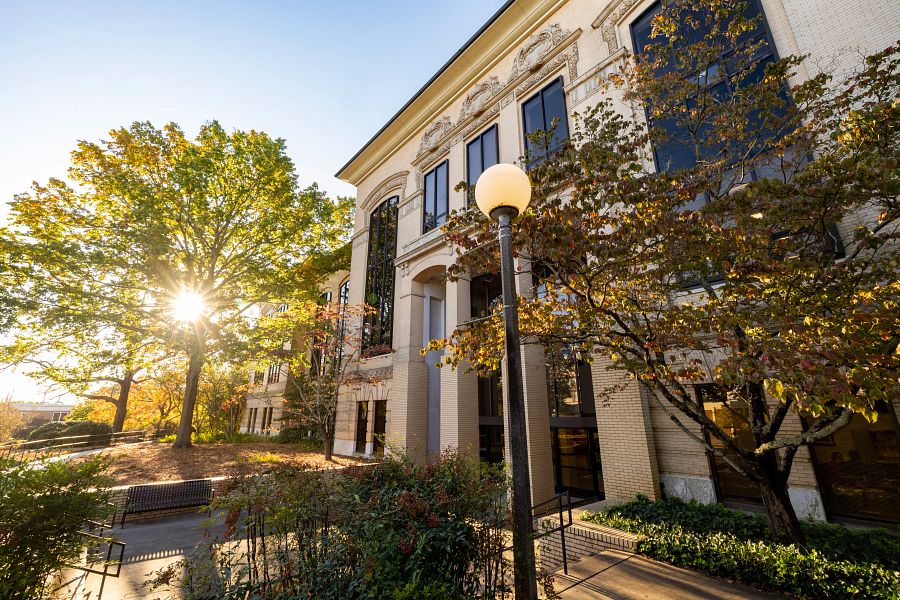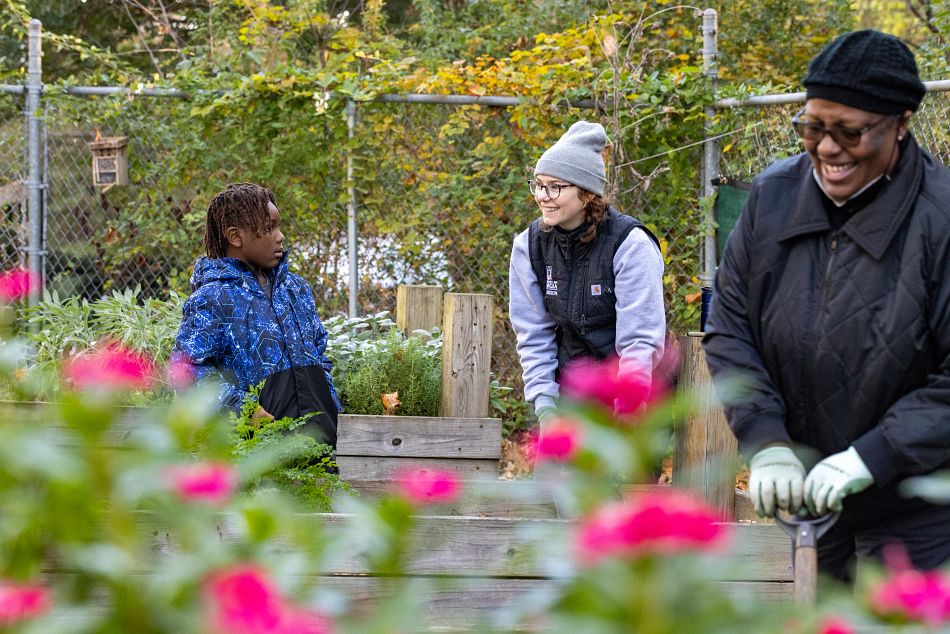|
These greenhouse bell pepper transplants show dramatically the benefit of compost. The transplants on the right were grown with a medium with 20 percent compost. The ones on the left were grown without compost. |
Compost is decayed manures, animal litter, leaves and other organic matter. More precisely, it's the product that results from composting, the process in which microorganisms convert these organic raw materials into organic residues such as humus.
Composting transforms the original manure, leaves, etc., into a much more desirable and more valuable soil amendment.
Why Apply Compost?
Organic matter improves most garden soils because it:
- Supplies important plant nutrients.
- Helps soils better retain nutrient.
- Improves soil aeration.
- Helps prevent soil compaction.
- Makes water more able to move into soil and stay longer.
- Makes soil easier to work.
Weed-free, Pathogen-free
Compost and noncomposted organic materials both contain high levels of organic matter. But only compost is free of weed seed and pathogens.
Besides organic matter, manure and products containing manure, such as animal litter, may also contain harmful weed seeds and disease germs that can harm humans, plants and animals.
The heat generated during composting kills these weed seeds and germs.
Holding Nutrients
Compost and noncomposted organic matter both contain essential plant nutrients such as nitrogen, sulfur and phosphorus. But compost holds the most nutrients in a leaching-resistant, slow-release form.
Many of the water-soluble nutrients in animal manures may quickly move into the soil and supply injurious levels of nutrients to plants, or they may leach down below the root zone and no longer be available to plants.
However, most of the nutrients in compost are in a complex organic form and must be mineralized in the soil before they can be leached or become available to plants.
For example, only about 10 percent to 15 percent of the total nitrogen in compost is typically available during the first cropping season.
Healthy Soil
Compost and noncomposted organic matter both contain many microbial species. But the highest numbers and most diverse beneficial microbes are found in compost.
Most gardeners are well aware of the old axiom, "Healthy soil is alive." That can be taken a step farther: "The more alive, the healthier the soil."
An incredible diversity of organisms lives in healthy soil. They range in size from the tiniest one-celled bacteria, fungi, algae and protozoa to the more complex nematodes and earthworms.
Soil organisms support plant growth as they decompose organic matter, cycle nutrients, enhance soil structure and compete with or in other ways inhibit the growth of harmful microbes. High-quality compost is literally swarming with beneficial microbes.
When? How Much?
Eight to 10 weeks before planting, broadcast the compost and incorporate it into the soil. Small amounts are helpful, but for the best results, the first application should be 20 to 30 pounds of compost per 100 square feet of garden soil.
After that, annually applying 8 to 10 pounds per 100 square feet should be enough.
Best Transplants
Many gardeners grow their own vegetable transplants. Growing their own enables them to have transplants of special varieties they couldn't get otherwise. And it lets them have the transplants when they need them.
Of special interest to those who grow their transplants, recent research compared conventional transplant growing media without compost to media amended with compost (20 percent of the volume).
Bell pepper transplants grown in compost-amended media were better transplants. They had larger stems and more roots. And after being transplanted to the field, the transplants grown in the compost-amended media produced 20 percent more peppers (by weight) than the transplants grown in nonamended media.







